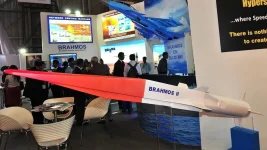- Views: 1K
- Replies: 4

India's BrahMos supersonic cruise missile, already renowned for its speed and power, is set to become even more formidable. The DRDO is developing a cutting-edge Inertial Navigation System (INS) based on interferometric fiber-optic gyroscope (FOG) technology, significantly boosting the missile's accuracy and reliability.
This development marks a major step forward for India's indigenous defence capabilities. INS plays a crucial role in missile guidance, allowing it to navigate accurately without relying on external signals like GPS, which can be jammed or disrupted. Traditional INS systems use mechanical gyroscopes, but these have limitations in terms of size, accuracy, and resilience.
DRDO's new FOG-based INS overcomes these limitations. Fiber-optic gyroscopes utilize the Sagnac effect, where light beams traveling in opposite directions within a coiled fiber-optic cable are affected by rotation. By measuring the phase shift between these beams, the gyroscope precisely determines the missile's angular velocity, enabling highly accurate course correction.
"This technology offers several advantages," explains a DRDO scientist. "FOG-based systems are more accurate, compact, and robust than their mechanical counterparts. They have no moving parts, making them less prone to failure and ideal for high-speed, high-stress environments like those experienced by the BrahMos missile."
The new INS will provide the BrahMos with enhanced immunity to electronic interference, ensuring its effectiveness even in the face of advanced jamming attempts. This, coupled with increased precision and reliability, will make the BrahMos an even more potent weapon system for India's armed forces.
The BrahMos missile, a joint venture between India and Russia, is capable of speeds reaching Mach 3 and has a range of up to 450 kilometers. It can be launched from various platforms, including ships, submarines, aircraft, and land-based launchers. With this latest upgrade, the BrahMos is poised to solidify its position as one of the world's most advanced and versatile supersonic cruise missiles.





